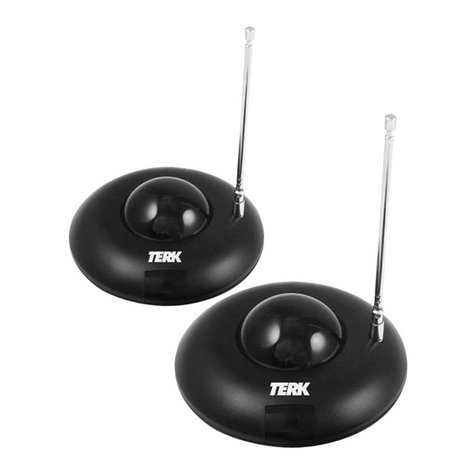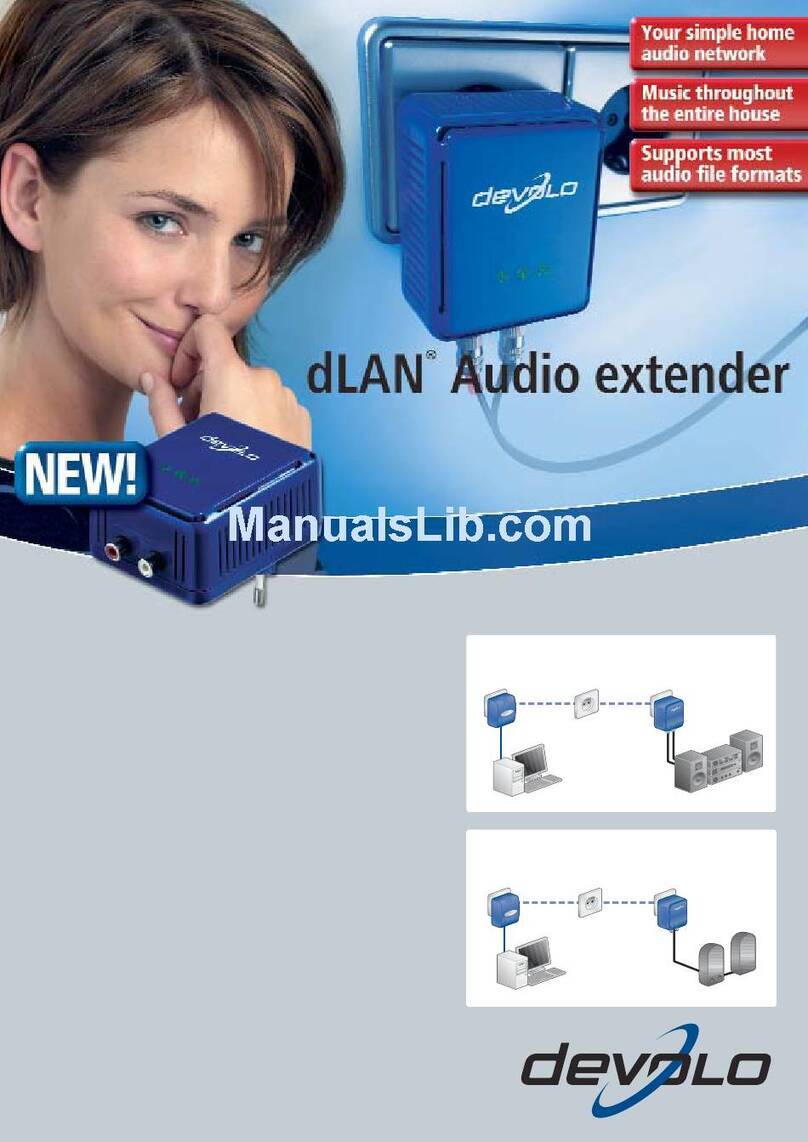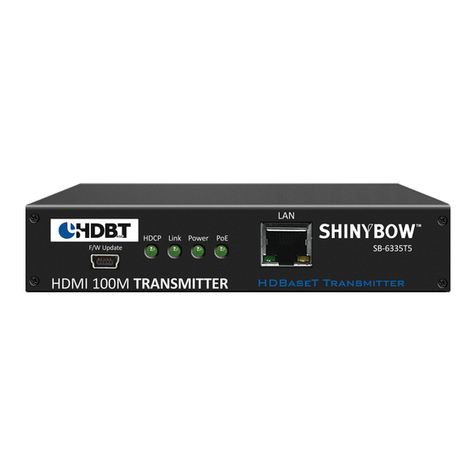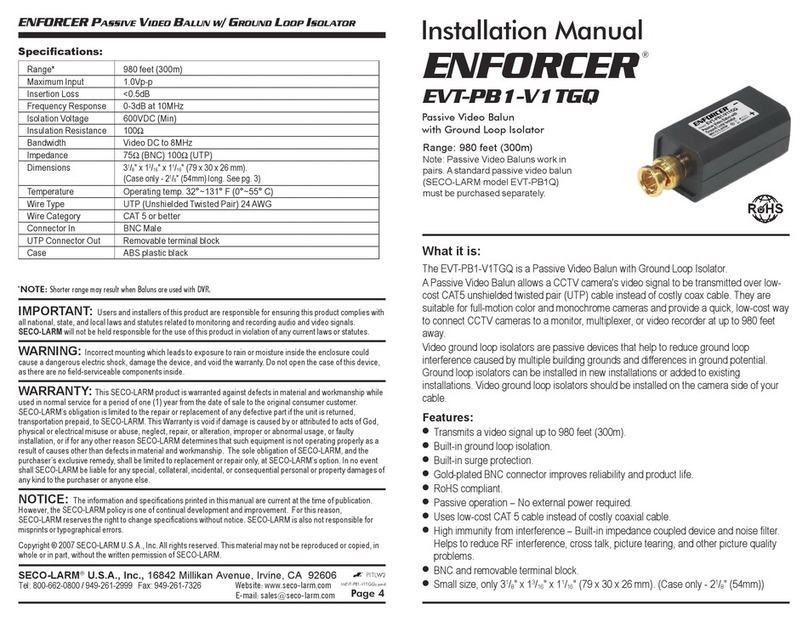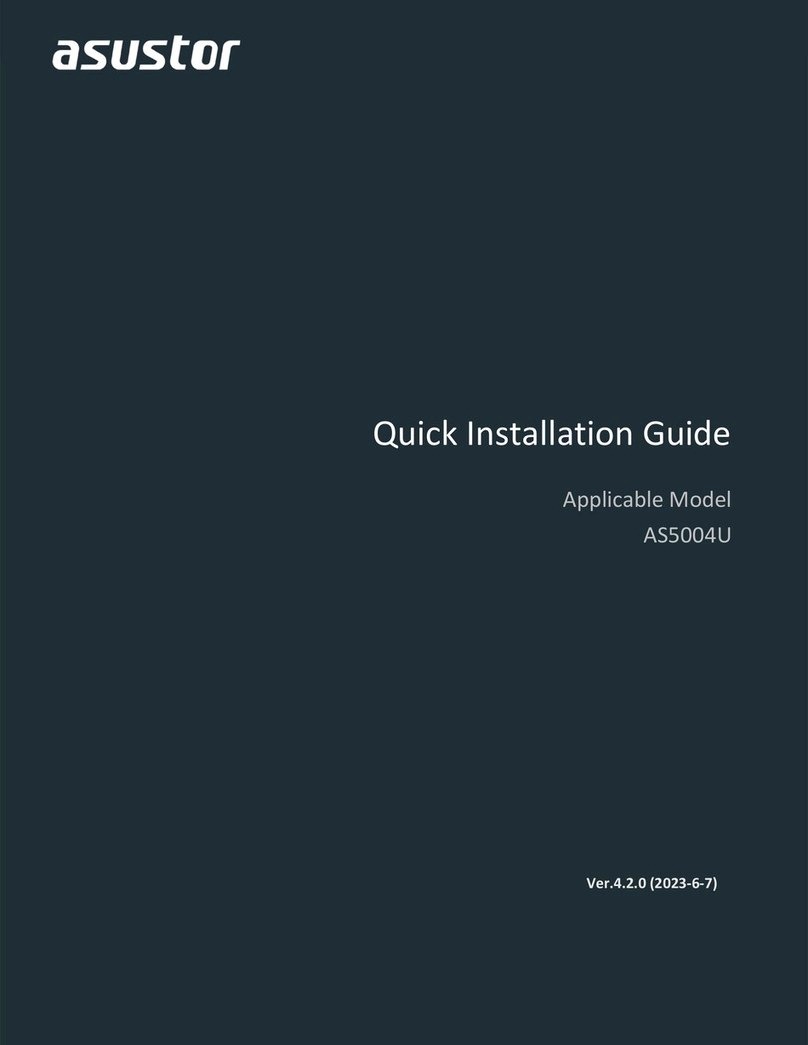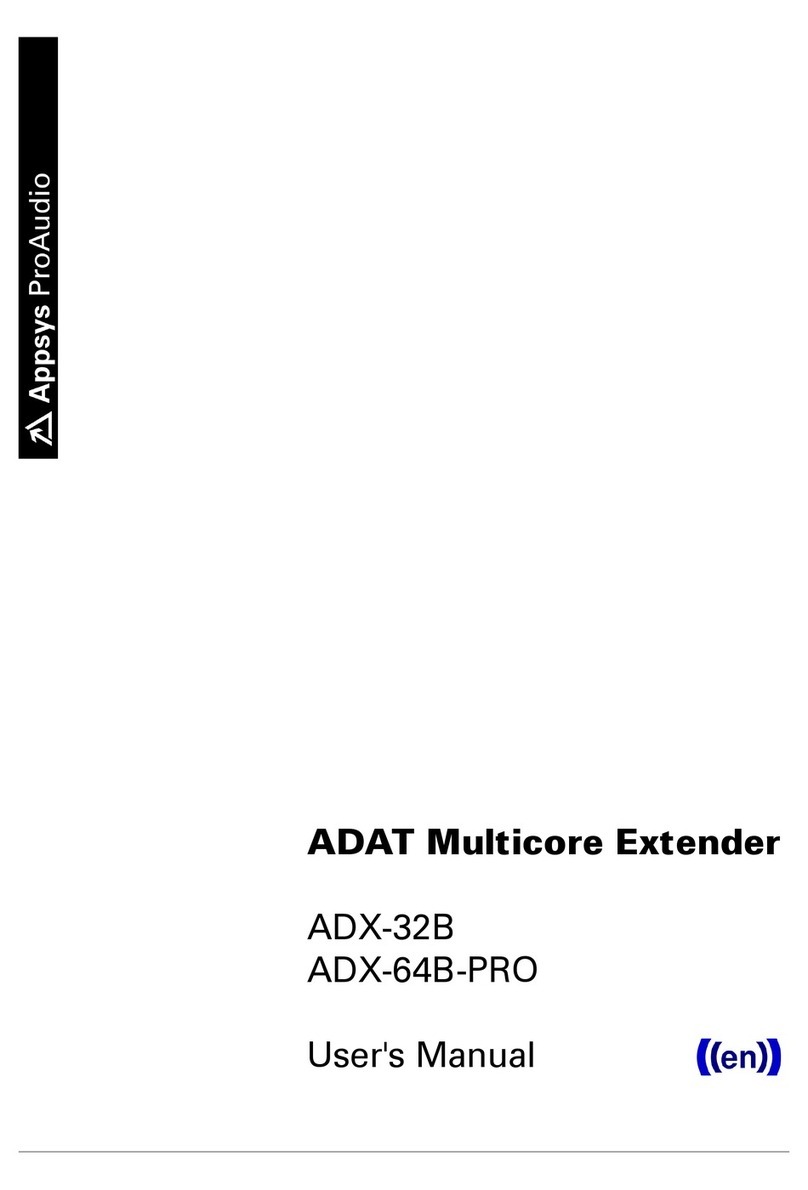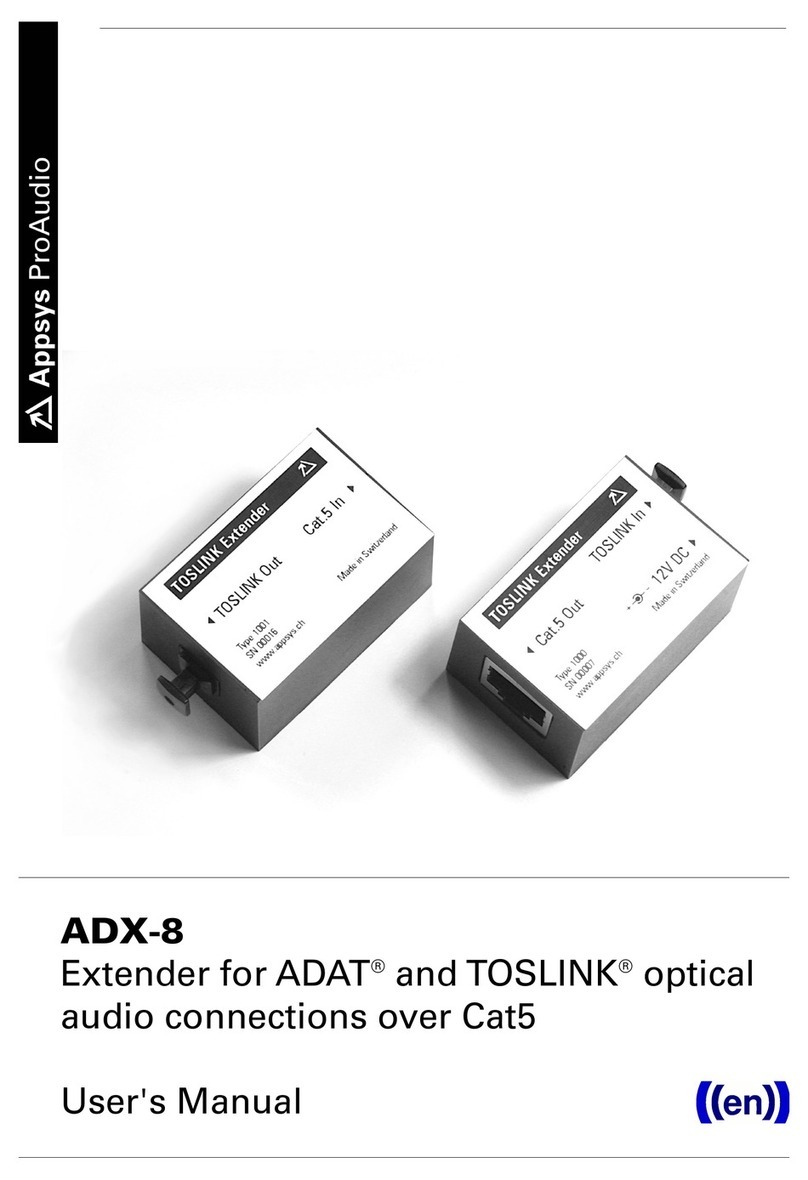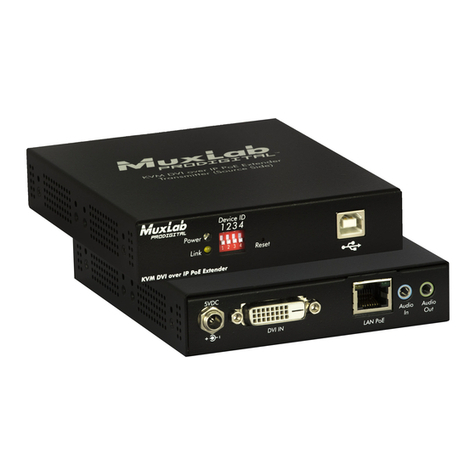Contents
1. Device overview.....................................................................................................................3
1.1. Front panel.....................................................................................................................3
1.2. Rear panel......................................................................................................................3
2. Typical application..................................................................................................................4
2.1. Digital snake (32 channels)..............................................................................................4
3. Important sa ety notes............................................................................................................5
3.1. Cat5 connections............................................................................................................5
4. Introduction...........................................................................................................................5
4.1. Overview.......................................................................................................................5
4.2. Applications...................................................................................................................5
5. Theory o operation................................................................................................................6
5.1. Optical transmission........................................................................................................6
5.2. Electrical transmission.....................................................................................................6
5.3. Latency..........................................................................................................................7
5.4. Jitter.............................................................................................................................7
6. Front panel connections..........................................................................................................8
6.1. Cat5 Connection 1..........................................................................................................8
6.2. Cat5 Connection 2 (ADX-64A-PRO only)...........................................................................8
7. Rear panel connections...........................................................................................................9
7.1. Power Input....................................................................................................................9
7.2. ADAT 1-4......................................................................................................................9
7.3. ADAT 5-8/Wordclock (ADX-64A-PRO only) .......................................................................9
8. Settings..............................................................................................................................10
8.1. Cat5 Termination..........................................................................................................10
8.2. Transmission direction (ADAT 1-4)..................................................................................10
8.3. Transmission direction (ADAT 5-8), ADX-64A-PRO only....................................................11
8.4. Channel 5 mode selection (ADAT or Wordclock)...............................................................11
8.5. Wordclock termination...................................................................................................11
9. Wordclock synchronization....................................................................................................13
9.1. General concept............................................................................................................13
9.2. Wordclock synchronization over ADAT............................................................................13
9.3. Wordclock synchronization over coaxial cable...................................................................13
10. Example applications...........................................................................................................14
10.1. Digital 16/16 multicore................................................................................................14
10.2. Digital 24/8 multicore (Wordclock-Sync over ADAT)........................................................15
10.3. Digital 40/16 multicore (Wordclock-Sync over dedicated coaxial cable)..............................16
11. Settings overview...............................................................................................................17
12. Speci ications....................................................................................................................18
13. Warranty...........................................................................................................................20
13.1. Terms and conditions...................................................................................................20
13.2. Contact......................................................................................................................20
13.3. About this document...................................................................................................20
